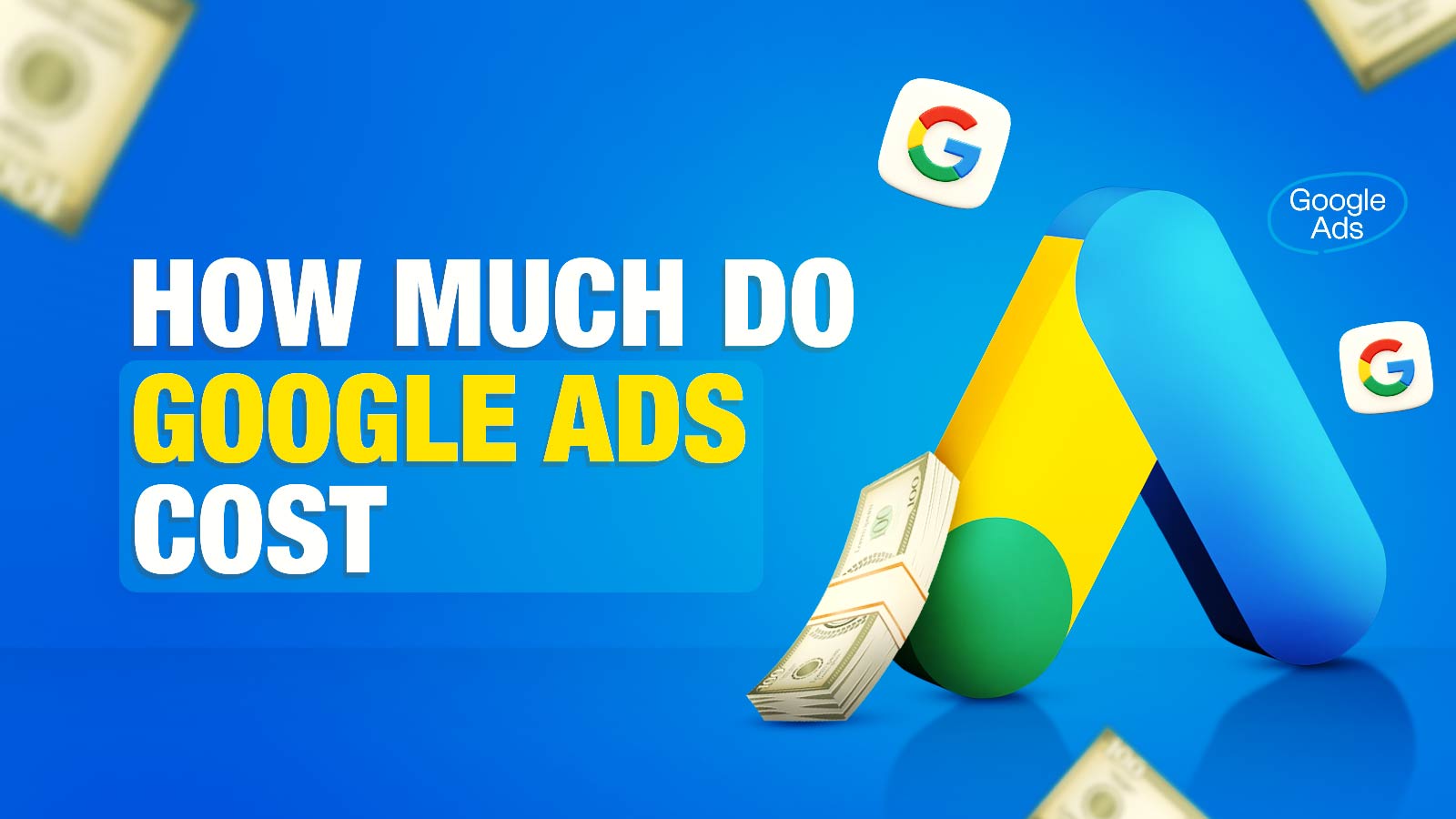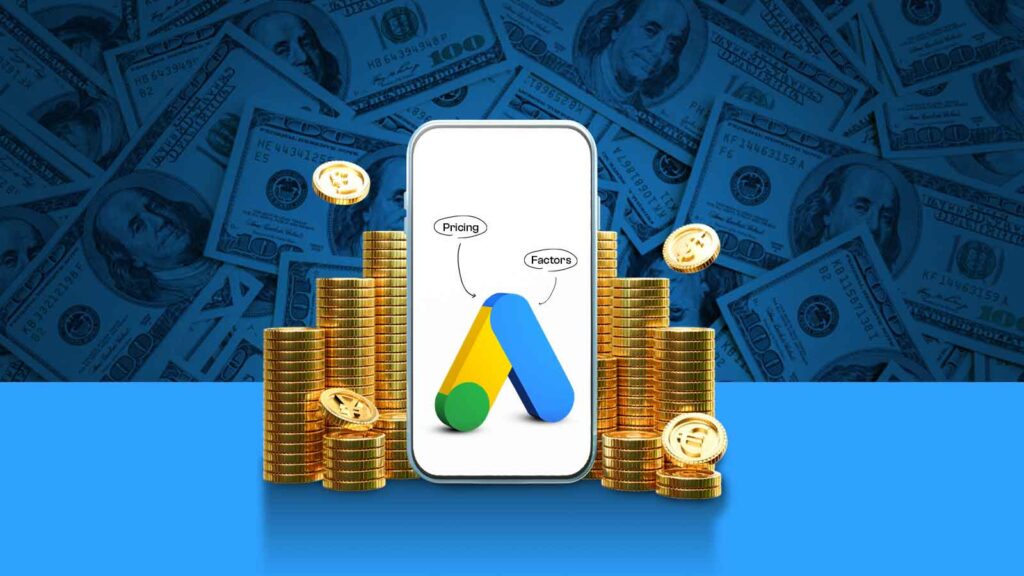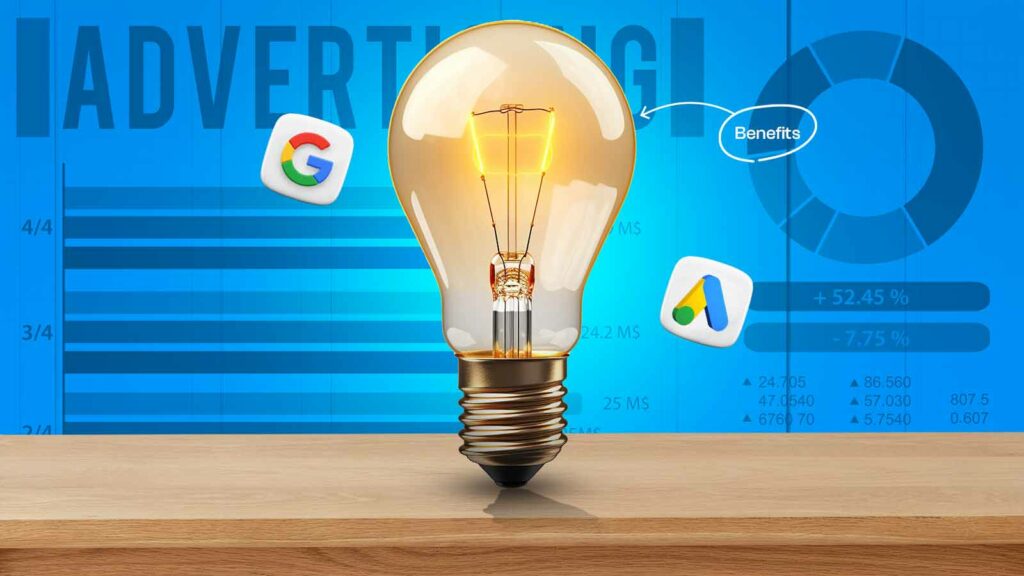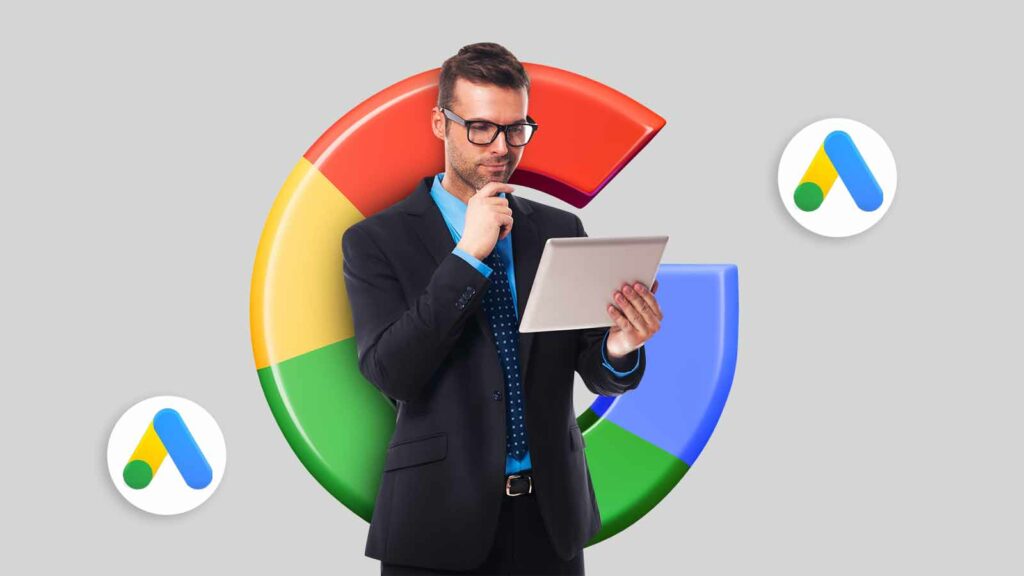
How Much Do Google Ads Cost? The Precise Guide
Running a Google ads campaign is one of the most influential and smart marketing moves that you can take if you use it strategically. However, many sources may tell you that the cost is not worth it, but it’s not true.
So, how much do Google ads cost? Google Ads costs $100 – $10,000 per month. In this case, most businesses pay $0.11 – $0.50 per click and $0.51 – $1000 per 1000 impressions. However, the pricing may vary depending on factors like industry, campaign targeting, and ad network.
If you want to know more about Google ads in detail, let’s dive into it!
How Much Do Google Ads Cost?

Typically, most businesses keep their Google advertising cost between $100 and $10,000. At the same time, most companies are paying between $0.11 and $0.50 per click.
However, your Google ads cost may vary depending on a few factors. Daily, small to medium-sized businesses may set aside $300 to $333 out of a monthly budget of $9,000 to $10,000.
But this also doesn’t give a clear picture. We have seen cases where some companies have succeeded on monthly budgets as low as fifty dollars and others as high as five hundred thousand.
The success of the campaigns also depends on your targets and ad creation techniques. That’s why expert marketers always suggest getting help from professional PPC marketers when it comes to Google ads.
Overall, your marketing budget should be in sync with your business goals, intended demographic, and the level of competition for your chosen keywords.
How Do Google Ads Work?

Google ads are not your simple marketing move. It’s a lot different than social media ads, so here are a few things you need to know.
Bidding
Google Ads operates on a bidding system, distinct from social media advertising. Advertisers begin by bidding on keywords relevant to their products or services. These strategic bids range from a few dollars to thousands, allowing advertisers to control the placement and timing of their ads on Search Engine Results Pages (SERPs).
This bidding process ensures that ads are displayed to users searching for specific keywords, maximizing the likelihood of reaching target audiences effectively. Advertisers can pause or end campaigns at any time and set daily budgets, giving them control over their advertising spend. Overall, Google Ads offers advertisers a powerful platform to reach potential customers actively searching for their offerings, making it an essential component of many digital marketing strategies.
User Search Query
When users search on Google using terms that advertisers have bid on, relevant ads are displayed. These ads match the user’s search query, ensuring relevance and maximizing the chances of engagement. Advertisers must bid strategically on keywords to ensure their ads are displayed to the right audience at the right time. This targeted approach helps advertisers reach prospective buyers actively seeking their products or services.
By aligning their bids with user search queries, advertisers can optimize their ad campaigns for effectiveness and improve their return on investment. Additionally, the flexibility of Google Ads allows advertisers to adjust bids and budgets in real-time to maximize results. Overall, Google Ads provides advertisers with a powerful platform to connect with potential customers and drive business growth through targeted advertising strategies.
Ad Rank
Google quickly determines ad rankings to establish the order of ad placement on a search engine results page. Ad rank considers both the quality score of the keyword and the bid amount. Ad visibility and click-through potential are influenced by ad rank. A higher rank increases the likelihood of an ad securing a prominent position. Therefore, advertisers aim to achieve a higher ad rank by optimizing their keyword quality scores and bidding strategically.
This ensures that their ads appear prominently to users searching for relevant terms, maximizing the chances of engagement and driving desired actions such as clicks and conversions. Advertisers continuously monitor and adjust their bids and ad strategies to improve their ad rank and overall campaign performance on Google Ads.
Interaction With Users And Click-Through
Users interact with Google ads by clicking on the ones that align with their search intent. When consumers find an ad that appeals to them, they can click through the advertiser’s website for further information or purchase. Successful clicks can lead to conversions or other meaningful actions, indicating user engagement and interest in the advertiser’s offerings.
This interaction with Google ads allows advertisers to gauge user behavior and tailor their marketing strategies accordingly. Advertisers can refine their ad campaigns by analyzing click-through rates and user interactions to reach their target audience and drive desired outcomes effectively. Ultimately, Google ads are a valuable tool for advertisers to engage with potential customers and influence their purchasing decisions through strategic targeting and compelling messaging.
What Factors Determine Google Ads Pricing?

As we already mentioned, there are several factors that you need to take into consideration while asking how much does advertising with google cost. So, here are a few of them:
Your Industry
The cost of advertising with Google Ads involves considering various factors that impact pricing. One significant factor is your industry affiliation. The competitiveness of industries, such as legal, accountancy, and real estate, can influence the Cost Per Click (CPC). Bidding on keywords in highly competitive sectors may result in a higher CPC. The overall competition within your industry plays a pivotal role in shaping your campaign budget.
Understanding the dynamics of your industry’s competitiveness helps you set realistic expectations for your advertising costs. Advertisers should strategically navigate the landscape of their specific industry to optimize their Google Ads budget effectively and achieve desired results. By aligning bids with industry demands, businesses can better manage their advertising expenditure while maximizing the impact of their campaigns on Google Ads.
Pricing Fluctuations And Market Trends
Google Ads pricing fluctuates due to shifts in customer behavior and evolving market trends. Advertisers must stay vigilant and adapt their keyword bidding strategies to remain competitive. Customer behaviors change constantly, impacting the cost per click (CPC) and necessitating adjustments in advertising tactics. Staying abreast of market trends enables advertisers to optimize their campaigns for maximum effectiveness and return on investment.
By continuously monitoring pricing fluctuations and market dynamics, advertisers can make informed decisions to ensure their ads remain visible and competitive in an ever-changing digital landscape. This proactive approach to managing Google Ads pricing helps advertisers stay ahead of the curve and capitalize on emerging opportunities while mitigating risks associated with market volatility.
Quality Score And Cost Implications
Google assigns a Quality Score of 1 to 10 to assess the quality and relevance of your ads, landing pages, and keywords. This score significantly impacts the cost implications of your ad campaigns. A higher Quality Score can result in cost savings and better ad placements. Advertisers with superior Quality Scores often enjoy more favorable positions in Search Engine Results Pages (SERPs) while paying lower costs per click.
This is because Google rewards advertisers who provide relevant and valuable content to users. By improving Quality Scores, advertisers can enhance the effectiveness of their campaigns while optimizing their advertising budgets. Ultimately, a higher Quality Score leads to better ad placements and improves return on investment (ROI) for advertisers using Google Ads.
Right Keywords And Competitive CPC
The keywords chosen by advertisers significantly influence the cost of Google Ads. Competitive keywords often result in higher CPCs, especially in high-demand industries. Advertisers must carefully select keywords to maximize campaign costs and achieve desired outcomes. This involves considering relevancy, user intent, and the competitive landscape within their industry. By strategically choosing keywords that align with their target audience’s search behavior and business objectives, advertisers can optimize their advertising spend and improve the effectiveness of their campaigns.
Additionally, monitoring and adjusting keyword bids based on performance data can help advertisers maintain a competitive CPC while maximizing their return on investment. Selecting the right keywords is essential for driving traffic, generating leads, and achieving success with Google Ads campaigns.
Bid Amount
The bid amount in Google Ads reflects an advertiser’s willingness to pay for a click on their ad. Advertisers must set an appropriate bid to remain competitive in ad auctions. However, they must balance placing a competitive bid and staying within their advertising budget limits. Setting too low a bid may result in limited visibility while setting it too high could lead to overspending. Ad agencies must carefully assess the market and keyword competition to determine the optimal bid amount. By doing so, they can ensure their ads receive sufficient visibility within their budget constraints. Finding the right balance is essential for maximizing the effectiveness of advertising campaigns while managing costs effectively.
Benefits Google Ads Brings To The Table

Unlike typical marketing moves, Google ads are interesting, and if you play smart, you will eventually gain a lot of ROI and conversions. Therefore, here are some proven benefits we have experienced.
Unlimited Potential
With Google Ads, companies have a fantastic opportunity to reach a limitless audience. Its scalability enables reaching new markets and targeting precise demographics effortlessly. Through constant refinement of keywords and strategic adjustments in pricing, advertisers can optimize click-through rates and fine-tune campaigns for optimal performance. The platform offers complete control over campaigns, empowering advertisers to halt, reenable, or modify ads without incurring penalties.
By leveraging Google Ads, businesses can unlock boundless opportunities for reaching and engaging with potential customers, driving significant returns on investment and conversions. Its intuitive interface and robust features make it a preferred choice for businesses seeking to maximize their online presence and grow their customer base. With Google Ads, the sky’s the limit when it comes to realizing the full potential of digital advertising.
Pay-Per-Click Returns Results Quickly
Google Ads provides a quicker option for obtaining outcomes that contrast with SEO’s gradual returns. Using PPC advertising, companies can attract customers to their websites quickly and get results immediately instead of waiting for organic search results to improve. This makes PPC an essential tool for those who want immediate traction in the digital space.
Marketers create an all-inclusive and robust marketing plan by fusing short-term SEO goals with PPC. Pay-per-click (PPC) advertising offers immediate benefits, such as traffic and conversions, while SEO builds long-term visibility and organic growth. Consequently, the approach allows companies to have the best of both worlds, which include short-lived gains and ongoing presence on the net.
Additionally, marketers can use their agility towards PPC campaigns to fine-tune strategies in real time, thereby leveraging performance optimization gains. A thorough selection of keywords, attractive ad copies, and strategic bidding enable businesses to reach the required audience effectively with significant follow-up activities.
Connecting With Consumers At The Right Time
Google Ads enables businesses to connect with potential consumers precisely when they are poised to make a purchase. By placing ads ahead of organic search results, businesses ensure their message reaches the audience at the most crucial moment when their intent to buy is highest. This strategic positioning enhances the likelihood of conversion by capitalizing on the immediacy of consumer intent. Whether users are actively seeking information or ready to make a purchase, Google Ads puts businesses in front of the right audience at the right time, maximizing the effectiveness of advertising efforts and driving meaningful engagement and conversions.
Precise Targeting
Businesses may take use of Google Ads’ pinpoint targeting capabilities to make ad updates that are uniquely suited to each situation. By simply defining target demographics and setting geographical limits, advertisers may accurately target their targeted consumers. Advertisements are more likely to reach their intended target—a local customer or specialized market—when they may be fine-tuned to their exact specifications.
Ads may be fine-tuned on the platform according to user demographics, interests, and activity depending on the platform’s extensive targeting capabilities. This improves the advertising strategy’s efficiency and effectiveness by making sure the correct individuals get the right marketing messages at the right time. Google Ads’ precision targeting options allow companies to maximize their reach, connect with their target audience, and generate more relevant and impactful transactions.
Ad Format Variety
Google Ads provides several ad forms, allowing marketers to target certain areas and engage their audience. Commercials might include pictures, interactive maps, and high-quality photos. This adaptability enables for visually appealing and engaging ads for varied audiences and market groups.
Google advertisements provides a variety of formats to meet varied marketing goals and target demographics, including visually beautiful display advertisements, interactive and immersive video ads, and brief and effective text ads. This versatility allows marketers to try numerous formats and adapt their message to their target demographic.
Diverse ad formats allow marketers to react to changing consumer tastes and trends, keeping their advertising current and effective in today’s dynamic digital world. Google Ads’ diversity of ad types lets marketers create appealing campaigns that grab attention, engage users, and achieve results.
Easy Campaign Tracking
Google Ads’ extensive and easy-to-use data tracking features ease campaign effectiveness monitoring. CTR, keyword search volume, CPC, ad quality score, and ad position ranking are easily accessible on the site for in-depth research.
Advertisers may easily measure KPIs to evaluate campaign effectiveness and improve performance. The user-friendly interface and customisable reports allow marketers to rapidly obtain important data and adjust insights to their aims.
Google Ads’ comprehensive monitoring features allow marketers to analyze campaign performance, find areas for improvement, and optimize tactics to maximize ROI. This easy monitoring lets marketers make data-driven choices and enhance their ads.
Quality And Relevance
Google prioritizes quality and relevance in its advertising ecosystem, creating a level playing field where well-executed campaigns can outperform competitors, regardless of bid amounts. While keyword bidding is a common tactic, Google’s emphasis on quality ensures that ads and campaigns that resonate with the target audience are rewarded.
Unlike some social media platforms, where visibility might be primarily driven by budget, Google’s algorithms favor ads that provide value to users. This means that advertisers who invest in creating high-quality, relevant content can achieve success, even if they have a smaller budget compared to competitors.
Remarketing Made Easy
Lastly, by providing easy-to-use tools and capabilities, Google Ads streamlines the remarketing process, letting companies get back in touch with website visitors. By showing customized advertisements to those who have previously visited their site, remarketing campaigns allow businesses to successfully re-engage prospective customers.
Using remarketing, marketers can put their brand in front of people who have showed interest before, which increases brand recognition and gets people to do what advertisers want them to do—like buy something or sign up for a newsletter. By maintaining constant contact with interested prospects and keeping the brand in the minds of those prospects, this tailored strategy increases the chances of conversion.
Advertisers may tailor their ads to users’ interests, behaviors, and previous experiences with the website thanks to Google Ads’ powerful remarketing features. Because of this adaptability, marketers may maximize the efficacy of their remarketing campaigns by targeting certain demographics with relevant messages and creative assets.
How A Google Ads Specialist Can Help?

You may turn your pay-per-click advertising efforts into a well-planned and fruitful strategy by enlisting the help of a Google Ads expert. To differentiate between mediocre and excellent advertisements, these experts have an inherent grasp of data and labor ceaselessly to analyze trends and patterns.
Experts in Google Ads go above and beyond standard keyword research to uncover specialty phrases. Then, they use them to create ad groups that are both highly relevant and cost-effective.
A Google Ads expert’s worth is based on their capacity to understand and make sense of numerical data to draw meaningful conclusions. They provide a thorough analysis of the campaign’s success or failure, enabling optimization and real-time tweaks to boost performance.
Thus, these experts keep your campaigns ahead of the curve by constantly modifying strategies to match changing market dynamics and being alert to the newest features and developments inside the Google Ads platform.
Frequently Asked Questions
Are Google Ads Worth It Nowadays?
Google is still the most popular search network in the world, with 3.5 billion users per day and 1.2 trillion searches every year. Google Ads are worth spending because they provide you the chance to target people who are actively looking for what you sell.
Is $500 Enough For Google Ads?
For small companies looking to get into Google Ads, a reasonable beginning budget is $500. It makes targeted campaigns possible, which is great for niches or specific locations. But more funds could be needed to make a difference in highly competitive industries.
Is It Worth Paying For Google Ads?
Advertising on Google Ads is a great way to reach people who are already interested in what you have to offer. This is a great way to boost sales, website visitors, and name recognition. Impressive outcomes may be achieved with advertising that is optimized well.
Is There A Monthly Charge For Google Ads?
Every month, on the first, or when the amount surpasses the payment threshold, Google Ads charges automatically. Advertising expenses and any unpaid amount from the prior month are covered by the charges.
Is Google Ads too expensive?
The budget for Google Ads might change depending on things like campaign objectives, targeting, and keywords. While most businesses have CPCs between $1 and $5, those with fierce competition may see even higher prices.
Are You Looking For The Best Marketing Services?
With Oyolloo, the best is always at your doorstep. We have a dedicated team of advertisers who know all the ins and outs of Google ads and can help you shine in this area. If you want to bring your business to the public eye through ads, we are offering expert hands.
Oyolloo has been the flagbearer of all kinds of digital marketing solutions, including PPC marketing, for a long time. With our expert team, we can take your marketing to another level. So, don’t hesitate to contact us for assistance!

















































